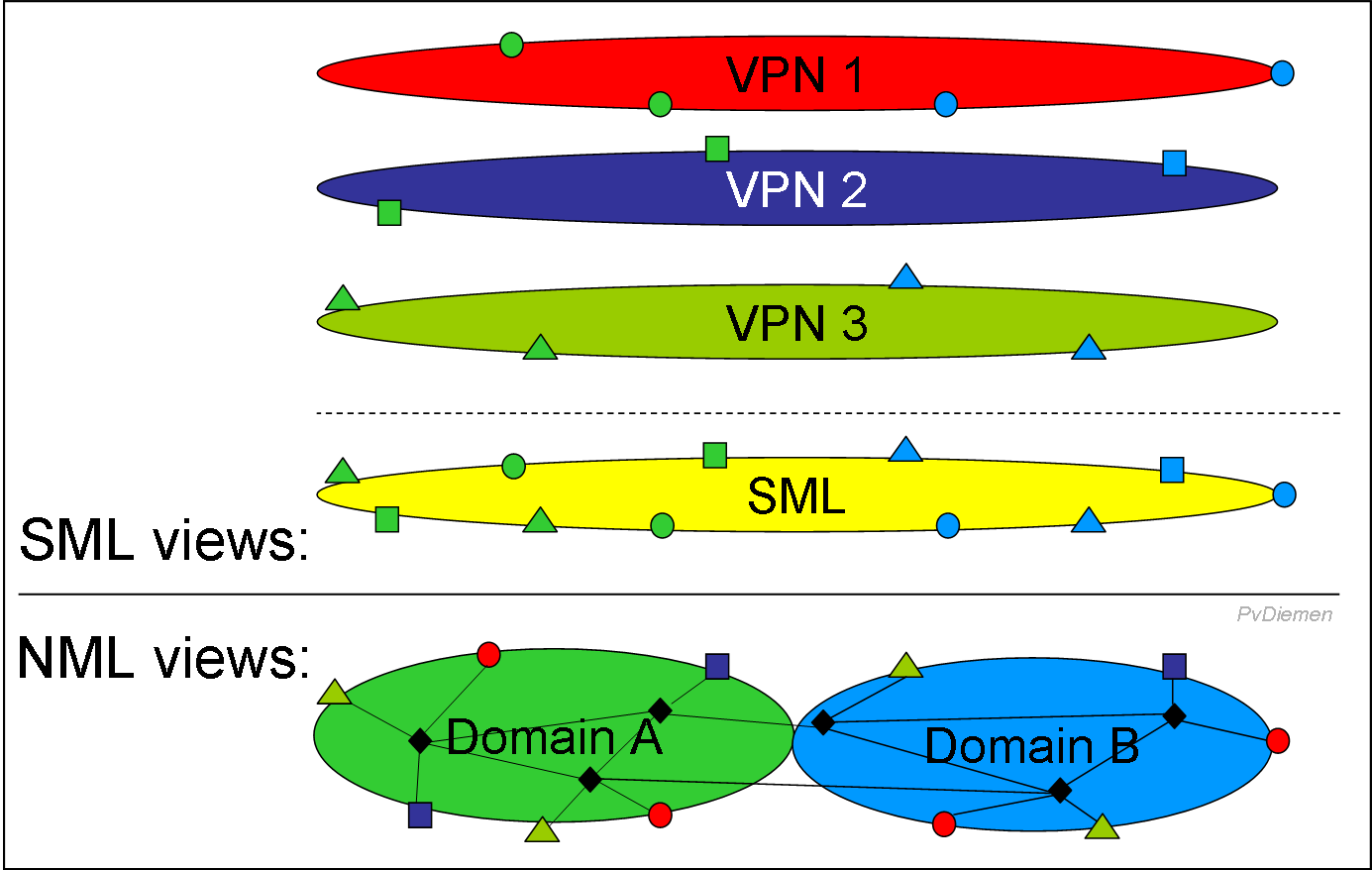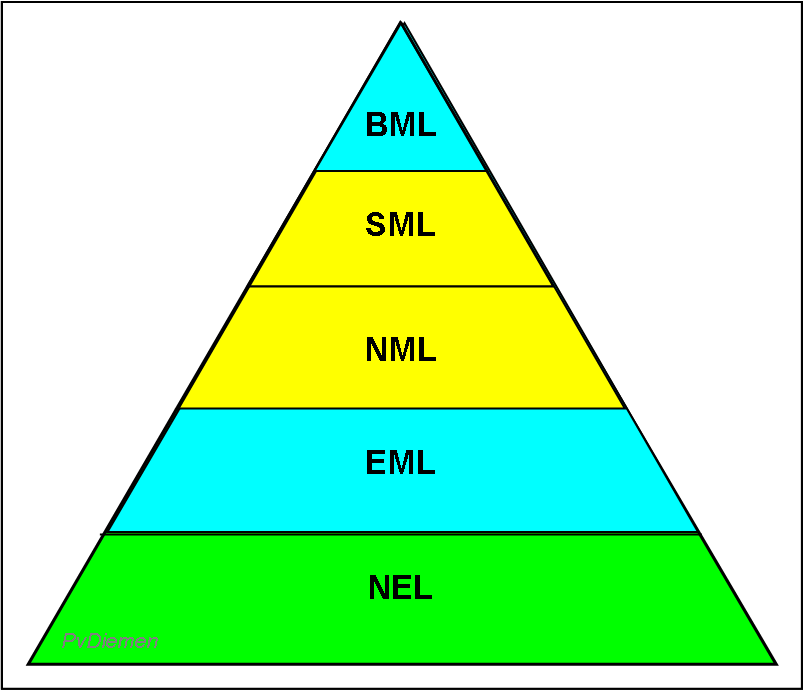
Last update PvD
2.7 LLA Summary
We have now an architectural layering for Network Management:
For management by a customer we also find

Logical Layer Hierarchy (Information Hierarchy): [M.3010]
Notes:
We have indicated what kind of (management) functions are required at each level. Support for such management functions at each of these layers require adequate views (physical/geographical and functional/logical), and should allow zooming and panning, customisable displays (attributes), and highlighting of relevant status (e.g. alarms).
Operations will vary depending on layer and network (type) specifics. It should be possible to restrict the view to components conforming to particular criteria (view of interest, domain of responsibility). It should be possible to vary the amount of information presented (attributes) with each component.
For customer/provider-relationship and related subjects (domains, contracts, SLAs, etc.) see chapter Interworking.
ITU does not define what information (data) should be kept where: at SML and/or NML and/or EML and/or NEL.
ITU specifies a view (information model) indicating that particular information is available at a particular level, but that still doesn't define whether data is actually kept at a particular level or is acquired from lower levels.
Information should be available at a particular level to carry out tasks corresponding to that level; not necessarily stored there, but sufficiently fast to obtain. E.g. service related information should be available on SML in order to answer inquiries and complaints by customers.
Typically, information is defined for the NEL –so should be available there– but is sometimes also part of the service profile.
Some network status –typical NML information– is also service related (but not specific for a particular customer).
As the same data will be at various places in the management systems, it should be clear what instance is leading (i.e. the source) and what is a (temporary) copy. For data about equipment (e.g. status) the equipment itself is the source (copies in EML & NML), for equipment parameters the TMN –most likely the EML– will be leading. For service data (parameters), the SML will be the source. For accounting (billing), the usage records are generated by the network.
It is important to be aware of what the source is of all data. As a rule of thumb: statuses originate in the network, parameters –in particular for service– in the SML.
BML is defined by ITU for reference purposes without further recommendations. ITU has only defined some interfaces between NEL and TMN, hardly anything within the TMN. These interfaces were driven by the capabilities available (bottom-up). With the orientation towards customers, this has changed to a business drive (from SML, top-down).
The TMN is also pictured as a pyramid:

Some claim that the pyramid should be upside down, as there is more added value at the top. Some claim it should be the form of an hourglass.
Though SML (and BML for that matter) are described by ITU, it is more an area for Information Technology (IT). This is also recognised by the NMForum), which performs a lot of work in this area. The NML and EML (and of course NEL) are areas for telecom network suppliers.
{'Real-time' network management (response time): EML ±1 min; NML ±5 min.}
Next chapter: MFA
Up to Contents
Up to Index
=O=